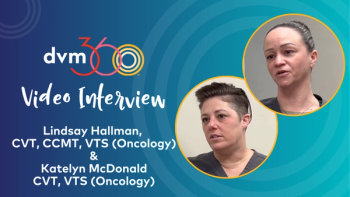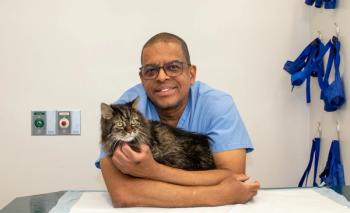
Rapamycin therapy for subclinical HCM in cats is now available through telemedicine
The virtual hypertrophic cardiomyopathy protocol is available to cat owners across 20 US states.
The veterinary industry’s first virtual care protocol using
The telemedicine protocol, launched by Petspan, enables cat caregivers who might face barriers to in-person veterinary care to access the treatment remotely. “Petspan was created to translate the most rigorous longevity science into practical care for pets," Daniel Tawfik, CEO of Petspan and Healthspan, said in a company news release.1 "Our HCM protocol gives cat parents access to a therapy supported by peer-reviewed research demonstrating efficacy, pioneering the clinical application of rapamycin in veterinary cardiology while removing geographic barriers to this cutting-edge treatment."
The protocol consists of 4 steps: registration, a virtual cardiology consultation with a board-certified specialist, prescription, and follow-up. Additionally, clients will have access to ongoing asynchronous monitoring through virtual visits, as well as access to customized formulations of rapamycin available as a compounded liquid or a coated, brand-name pill. According to Petspan, the treatment is compounded to cater to each patient’s weight and HCM stage.
Delayed-release rapamycin works by inhibiting the mTOR pathway. mTOR, a protein kinase responsible for regulating cell growth, proliferation, metabolism, and protein synthesis, plays a role in the abnormal cardiac growth seen in HCM. “The mTOR pathway is a central driver of maladaptive cardiac growth in HCM. Rapamycin's targeted inhibition offers genuine disease modification rather than merely managing symptoms—a paradigm shift in feline cardiology,” Stephanie Sheen, DVM, chief veterinary officer at Petspan, said in the release.1
Up to 15% of cats are affected by HCM, with Maine coon, Ragdoll, British shorthair, Chartreux, Persian, and sphynx cats being predisposed to the disease. The condition, which causes the heart walls to thicken, is found in 1 in 3 cats older than 9 years and is the leading cause of death in adult cats.3 The definitive cause of HCM in cats is still unknown. Until recently, a therapeutic treatment for HCM did not exist.2
In the landmark RAPACAT trial—a clinical study that assessed the effects of once-weekly delayed-release rapamycin in cats with HCM—it was found that cats receiving low-dose rapamycin exhibited “significantly reduced” maximum heart wall thickness compared with the placebo after 180 days.1 Additionally, most pet owners observed measurable improvements to their cat’s cardiac health within 8 to 12 weeks.1
Currently, pet owners in California, Delaware, Florida, Idaho, Indiana, Iowa, Kansas, Louisiana, Maine, Massachusetts, Missouri, Nebraska, New Jersey, New York, Ohio, Pennsylvania, Rhode Island, Vermont, Virginia, and Washington, DC, can enroll their cats for the protocol.
References
- Petspan launches first telemedicine protocol using rapamycin to treat hypertrophic cardiomyopathy in cats. News release. Petspan. July 8, 2025. Accessed July 14, 2025.
https://www.businesswire.com/news/home/20250708613679/en/Petspan-Launches-First-Telemedicine-Protocol-Using-Rapamycin-to-Treat-Hypertrophic-Cardiomyopathy-in-Cats - Bautista-Alejandre A. First drug to reverse feline HCM expected to receive FDA conditional approval. dvm360. February 25, 2025. Accessed July 14, 2025.
https://www.dvm360.com/view/first-drug-shown-to-reverse-feline-hcm-expected-to-receive-fda-conditional-approval - McCafferty C. FDA conditionally approves first drug for feline subclinical hypertrophic cardiomyopathy. dvm360. March 14, 2025. Accessed July 14, 2025.
https://www.dvm360.com/view/fda-conditionally-approves-first-drug-for-feline-subclinical-hypertrophic-cardiomyopathy
Newsletter
From exam room tips to practice management insights, get trusted veterinary news delivered straight to your inbox—subscribe to dvm360.






